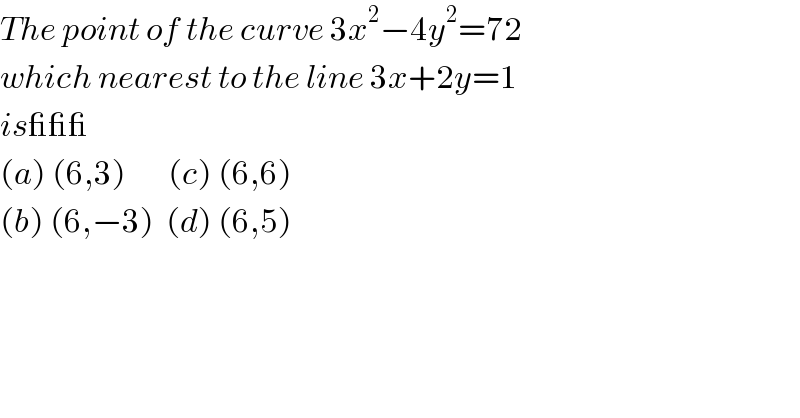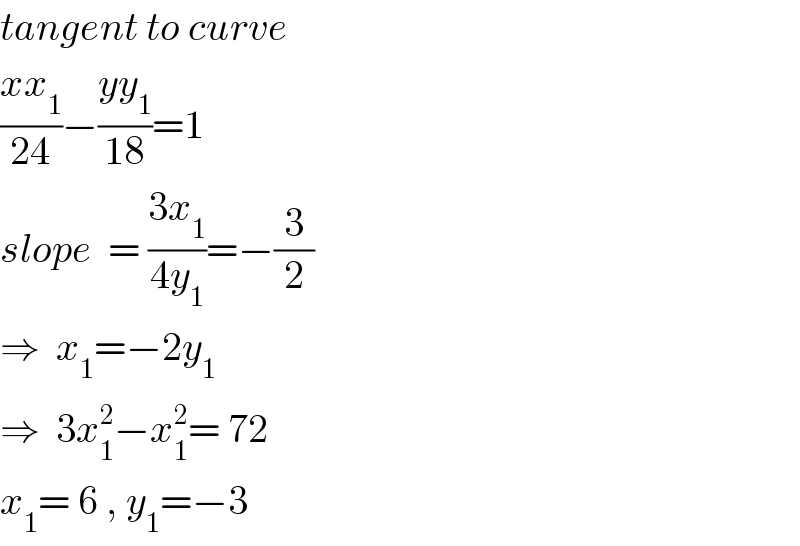
Question and Answers Forum
Question Number 112358 by john santu last updated on 07/Sep/20

Answered by MJS_new last updated on 07/Sep/20
![distance of point to given line is d=((∣3x+2y−1∣)/( (√(13)))) curve: y=±((√(3x^2 −72))/4) ((∣3x±((√(3x^2 −72))/2)−1∣)/( (√(13)))) the absolute doesn′t change the values only the signs. we need (d/dx)[3x±((√(3x^2 −72))/2)−1]=0 3±((x(√3))/( (√(x^2 −24))))=0 ⇒ x=±6 ⇒ y=±3 inserting in d we get the minimum with x=6∧y=−3](Q112365.png)
Commented by john santu last updated on 07/Sep/20

Answered by ajfour last updated on 07/Sep/20

Commented by ajfour last updated on 07/Sep/20

Commented by bemath last updated on 07/Sep/20

Commented by ajfour last updated on 07/Sep/20

Commented by bemath last updated on 07/Sep/20

